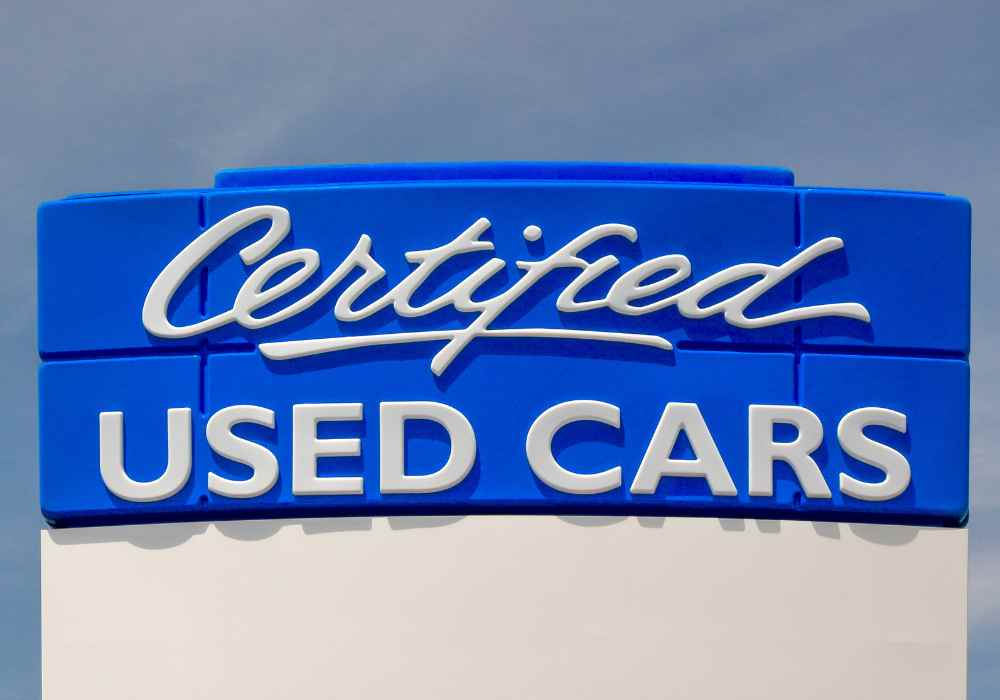You ought to be aware of more than a couple of things before purchasing a used car. However, with just luck, you can find a car that addresses remarkable value.
Throughout the long term, another category has shown up, which rouses certainty while offering an extraordinary incentive for used car customers.

It is not new or utilized but certified pre-owned (CPO). These vehicles are held to better quality, and not all take care of business.
A certified pre-owned vehicle is a used car that meets a severe arrangement, often determined by the maker of the used car. Each program has its rules, which regularly centre around age, condition, and mileage.
It is not unexpected to find ongoing models that are off-rent, which are bound to be kept up with at the showroom. This all amounts to a more certainly ownership experience.
Let’s discuss the pros and cons of a certified pre-owned car.
Pros of A Certified Pre-owned Car
1. Pre-owned cars cost less
Because of how much a vehicle deteriorates in the initial years — a three-year-old used car can undoubtedly lose 30% of its worth — a CPO vehicle will cost fundamentally under a shiny new model with similar choices and trim.
Some CPO programs likewise permit the vehicle to be rented or funded at a similar or lower rate than another vehicle.
2. CPO programs offer current-creation models
Since most makers save their vehicles underway for five or six years, by buying a few-year-old model right off the bat in its creation life cycle, you will purchase a current-age vehicle that is still a very long time from being supplanted by an all-new variant.
3. A CPO vehicle is a generally low-risk purchase
Inclusion shifts by the producer; however, it is not intriguing for CPO powertrain-guarantee inclusion to extend for four, five, or even a long time from when the primary proprietor bought the vehicle. Numerous guarantees cover the costly parts for up to 100,000 miles.
Practically every CPO program puts vehicles through a multipoint review by industrial facility-prepared professionals, including checking from 100 to 300 things.
4. More current, lower-mileage vehicles
Most CPO vehicles should ensure that mileage and age cutoff points are affirmed. In any case, this shifts. Generally, cars should be under six years of age and have under 70,000 miles to qualify; many projects have even lower age and mile limits than that.
Since numerous new vehicles are rented for only a few years nowadays, finding extraordinary failure mileage instances of each model on the market for all intents and purposes is simple.
5. Trip protection
A CPO vehicle can let you down, as can any new vehicle. That is the reason a few projects offer excursion interference protection.
6. Buyback security or swap-out choices
Some CPO projects will repurchase your vehicle if it is found to have been presented to a flood or fire or has had its odometer moved back.
The General Motors Vehicle Exchange Program permits purchasers three days or 150 miles to choose whether to keep their new CPO vehicle or trade into another GM model, which they can accomplish under any condition.
Cons of Certified Pre-owned Car
1. CPO bargains change broadly
There is no such thing as a standard CPO program. You will have to carefully peruse the arrangement’s fine print to comprehend the agreements. That settles on your choice interaction somewhat more convoluted.
Note: Be certain that you are clear about which element backs the guarantee — the dealer or the manufacturer.
2. CPO vehicles cost more
A CPO vehicle can cost two or three hundred to a couple of thousand bucks more than a non-CPO vehicle from a similar seller.
A CPO program protects against breakdowns, and the maker has consented to fix any issues for quite a long while and a huge number of miles. The seller tech invests energy in reviewing the vehicle and fixing issues before you buy it.
3. There may be fewer choices
As a result of the intense examination, reconditioning, and low-mileage necessities, a predetermined number of pre-owned cars make the CPO grade. That can sometimes make it more testing to find the vehicle you need with the choices you want in the variety. You need to be adaptable to things like tone and choices.
4. Other Considerations
You will need to know unequivocally what the CPO guarantee covers and for how long. Precisely what parts are investigated differs between CPO programs. While most major mechanical parts are covered, get a duplicate of the examination list to discover what is on it and which possibly costly to-fix components, if any, it could have been left off.
5. It is still a used car with the potential for issues
It does not make any difference how many examinations you perform, which guaranteed vendor you pick, and how cautiously the vehicle is reviewed, there is no guarantee that the ensured recycled vehicles will not have any issues in the following couple of years. Notwithstanding, accreditation can diminish the gamble.
Few Tips for Purchasing A Certified Pre-owned Car
Please follow the few tips we have shared below before you purchase a used car. These are extremely essential and useful for you.
- Do explore the used car you are keen on and the dealership’s service department or showroom.
- Check for certification, as most pre-owned vehicles are not guaranteed.
- Ensure that you get the vehicle’s guarantee.
- Always like to manage nearby affirmed used purchasers.
Conclusion
Purchasing a used car implies a more noteworthy hazard component than picking another model, particularly concerning its mechanical condition. Keeping that in mind, automakers keep up with what is called certified pre-owned (CPO) programs. These are intended to both add esteem using proprietorship advantages and limit the gamble engaged with purchasing a late-model pre-owned car.
While purchasing a certified pre-owned car, you must look at the pros and cons. Purchasing a used car is beneficial, but only when it is worth the amount.